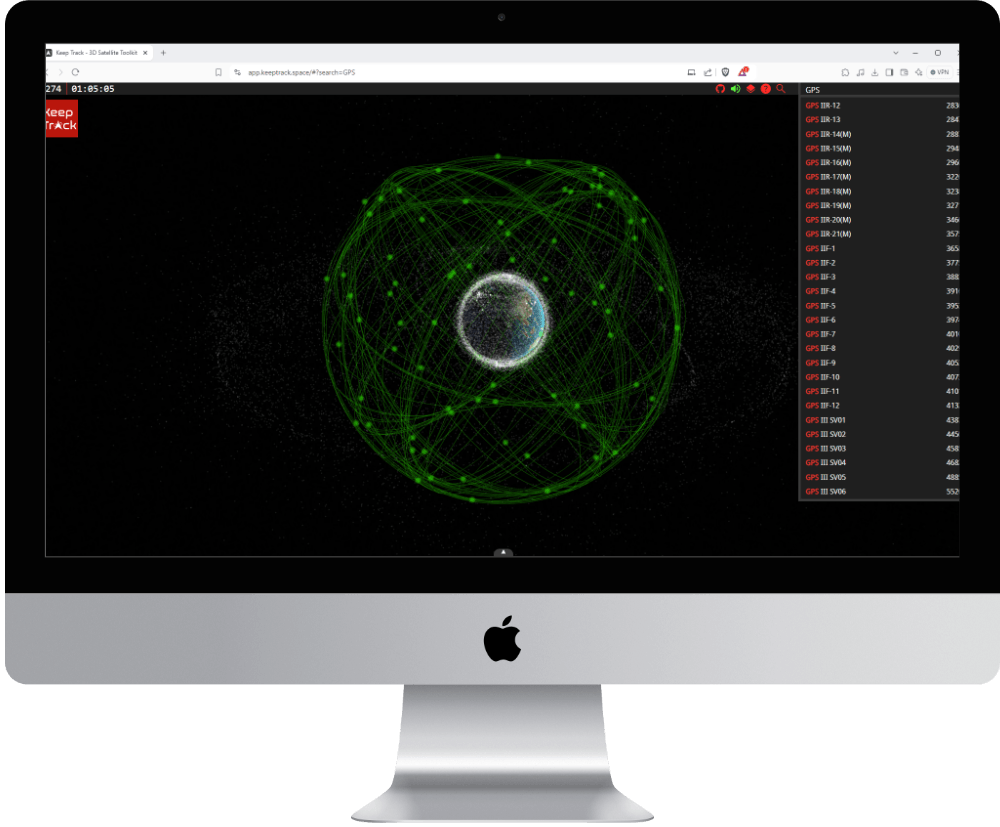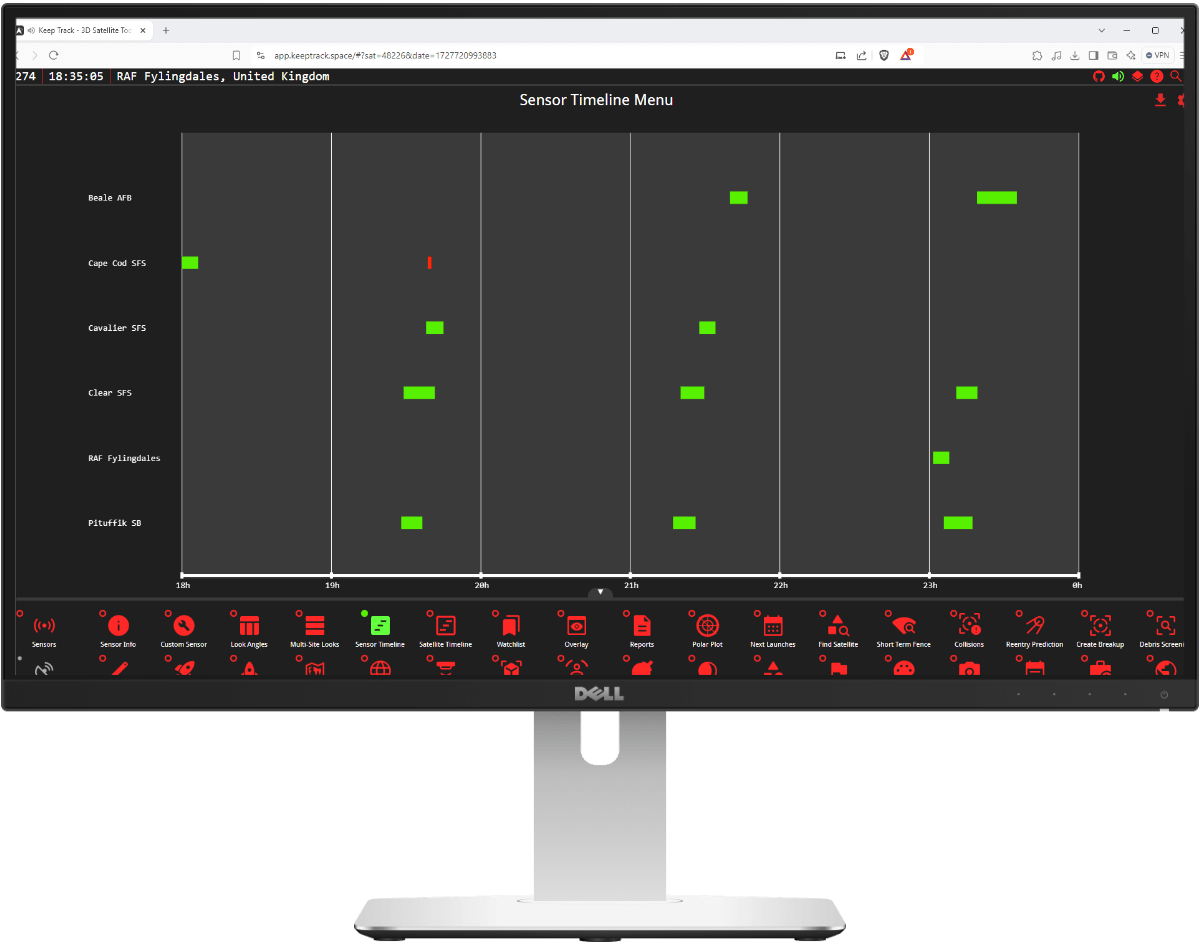Space Brief 6 Nov 2024
Discover the latest in satellite technology with the launch of the world's first wooden satellite, new test materials for the ISS, and significant developments in orbital space debris.

Features
Satellite tracking made easy for everyone - no engineering degree required!
Start tracking satellites in seconds, with no downloads or installations required. Free and open-source for everyone.
Experience smooth, responsive satellite tracking that fetches the latest data from multiple sources automatically.
Enjoy a uniquely smooth and responsive experience, even when tracking thousands of objects simultaneously.
Access detailed information on over 37,000 satellites and debris objects, including their orbits, designs, and operators.
Explore what different sensors can detect, or create your own custom sensor to analyze visibility and coverage.
Visualize and analyze satellite breakups with just a few clicks, watching debris spread patterns over time.
See new launches from any Earth location and quickly determine satellite visibility from various sensors.
Understand space debris distribution and evolution over time with intuitive visualizations.
Easily find and filter satellites based on various criteria, including name, ID, country, type, and orbit.
Join a vibrant open-source community where you can contribute ideas, code, and help shape the future of satellite tracking.




From the classroom to the control room, Keep Track has you covered.
Build a list of satellites you want to track and get popup alerts when a satellite is about to pass through a sensor field of view.
Finding out when sensors will see a priority satellite is only a few clicks and involves no math or spreadsheets!
Simulating a new launch is as easy as picking a similar satellite and clicking the New Launch button. Mission planning has never been easier.
Explore the app's features and capabilities through a hands-on experience, making learning fun and engaging.
The app is built using custom shaders and 3D models. It is designed to be as beautiful as it is functional.
Use an Xbox controller to control the app. This is great for presentations and demonstrations.
You can embed the app on your website for free. Everything is AGPL licensed and open source.
Show your customers what your satellite will look like in orbit before you launch it.
Use one of the many 3D models available in the app or load your own satellite model.
Show your audience the problem of space debris. You can show them how many objects are in orbit and how they are distributed.
Show how your mission will help improve the problem of space debris.
Visualize the debris we aren't tracking. You can use ESA estimates and see the millions of objects we can't track consistently.
FAQs
Space is hard. Some of these answers will hopefully make it a little easier.
When I was a Lieutenant in the Air Force, I was responsible for tracking satellites. I was frustrated with the 1970s technology I had to use, so I decided to build a better tool. I hope you find it useful!
I'm a big believer in open source software. I think it's the best way to build software. I also think that space should be free and open to everyone. I hope that by making this app free, it will help people learn about space and satellites.
Please let me know! I am always looking for ways to improve the app. You can add an issue on GitHub or send me an email at [email protected].
Yes! Keep Track relies on the Orbital Object Toolkit (also free) and that is tested against USSPACECOM's official algorithms. The results are within 1mm of the official results.
Yes! There is a full docs page that explains how to use the app. I am cotinuing to add to it, so if there is something you want to see, please let me know.
You can download the app from the GitHub repository. It is already built and ready to go. Just download the zip file and extract it. There is a batch file that will start the app in chrome without any server required.
The TLEs are sourced from multiple websites and then the database is updated every 8 hours. Additional information about the satellites is sourced from twenty different websites and processed by the server daily.
If you want to collaborate, please reach out to me at this email. If you have a non-commerical project, I am happy to help and would love to hear about it. Some of the best features in the app were inspired by users.
From community resources to technical documentation, take a deep dive into the world of space and satellite tracking.
Discover the latest in satellite technology with the launch of the world's first wooden satellite, new test materials for the ISS, and significant developments in orbital space debris.
Today's highlights include SpaceX's Dragon cargo mission to the ISS, the first wooden satellite launch, and updates on NASA's Voyager mission. Additionally, the Space Force's X-37B space plane showcases unique aerobraking strategies.
China's Tiangong space station completes crew rotation, Rocket Lab prepares for confidential launch, and Japan successfully launches military satellite with its H3 rocket.
Today focuses on Blue Origin's preparation for New Glenn's debut, SpaceX Crew-9's ISS maneuver, the importance of U.S.-China cooperation in space, and breathtaking ISS photography.
Today's brief covers a historic milestone for China's space program, the decoding of a simulated alien signal, innovative solutions to address satellite air pollution, and industry shifts driven by major investments and contracts.
Today's update highlights Boeing's challenges with the Starliner, Europe's IRIS2 constellation advancement, China's CAS Space's global ambitions, and vivid new telescope images of cosmic events.
SpaceX achieves a new launch record with its Starlink mission, NASA's Perseverance rover captures eerie Martian winds, and Buzz Aldrin endorses Trump. Plus, discussions around space debris and military space tech agreements.
Today's briefing covers China's successful Shenzhou 19 launch to the Tiangong space station, NASA's upcoming spacewalks plan after a spacesuit issue, and innovative propulsion research for space journeys.